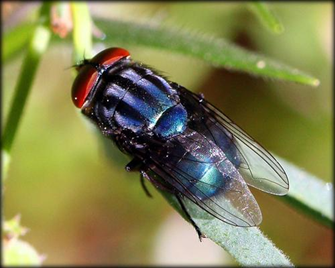July 2025
New World Screwworm
By Elaine LaRoche, DVM with K-State Equine Veterinary Practice Certificate
A Frightening Dilemma
 |
| New World Screwworm in a wound, Breaking Belize News, Pech, 2024. |
New World Screwworms (NWS; Cochliomyia homi-nivorax) are a resurfacing problem. The previously eradicated (in the U.S.) flies have been migrating north and have now been found in Mexico. USDA Animal and Plant Health Inspection Service (APHIS) collaborates with Panama to maintain a barrier in Eastern Panama to prevent northward migration. Sterile male screwworms are released to maintain this barrier which is aimed at limiting northward migration of this insect across northern borders. Increased cattle movement, new farming areas, and decreased surveillance has resulted in a weakening of this barrier leading to screwworm expansion north past Panama.
Why Should You Be Concerned as a Horse Owner
NWS lay eggs within open wounds, the larvae hatch and consume live flesh from the animal host. This infestation can cause serious, often deadly damage to the animal. If NWS were to enter and spread in the United States, it could have a significant impact on you and your equine athlete. If such a scenario were to occur, horse showing and movement of horses may even have to be halted.
 |
| New World Screwworm Fly, iNaturalist, Gallagher, 2017. |
What to Look For:
- Adult flies are of similar size to house flies with orange eyes, metallic green/blue body, and three dark stripes along their backs
- Non-healing or enlarging foul smelling wounds with or without weight loss
- Maggots may be seen in the wound
How to Protect Your Horse
The best practice is to check on your horse daily. Take note of any wounds on your horses’ body and monitor. If you see any of suspicious signs listed above, it is recommended that you contact a veterinarian to assist with evaluation and medical recommendations. If maggots are seen in the wound, samples will be collected and sent to a lab for testing. Your horse may be quarantined if disease is suspected. If confirmed, the horse will be maintained in quarantine while animal health officials provide daily wound care and larvicidal/insecticidal treatments until the infestation is eliminated.
 |
|
Image provided by Dr. Elaine LaRoche |
Citations
The Center for Food Security and Public Health. (2016, January) "Screwworm Myiasis". The Center for Food Security and Public Health. Retrieved 1 May, 2025.
U.S. Department of Agriculture. (2025, May). “New World Screwworm.” Retrieved 1 May, 2025.
